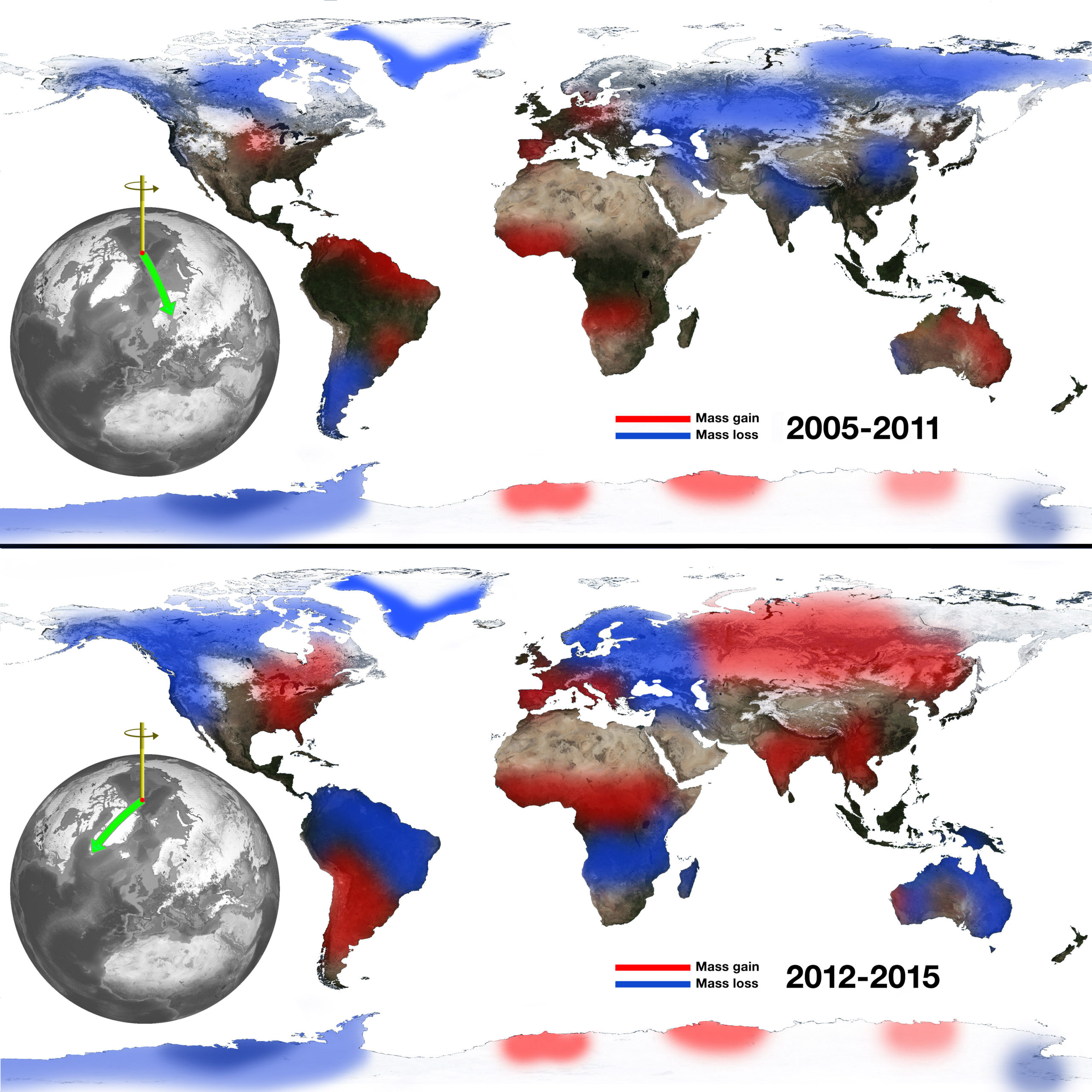Something strange is happening to our planet. Around the year 2000, the North rotational pole started migrating eastward at a vigorous clip. Now, scientists at the Jet Propulsion Laboratory have figured out what’s going on — and you’ll be shocked to learn that humans are behind it.
The rotational axis of any planet, including our own, is in constant flux. That’s because planets aren’t perfect spheres, but bumpy, pitted things whose mass is always on the move. “If you take a chunk of material from some area, you are breaking the symmetry, and the spin axis starts moving,” Surendra Adhikari of the Jet Propulsion Laboratory told Gizmodo.
Through careful observations and mathematical models, Adhikari has discovered that our planet’s recent polar wanderlust has two causes: the melting of the Greenland and West Antarctic ice sheets, and changes in the global distribution of water stored on land. Both of these are related to a single underlying phenomenon.
“The bottom line is that climate change is driving the motion of the polar axis,” Adhikari said. His findings are published in Science Advances today.
Scientists have taken careful measurements of Earth’s spin axis since 1899. Prior to the 21st century, the pole wandered toward Hudson Bay, Canada, moving at a rate of about seven centimetres a year. This long-term migration is believed to be related to the loss of the Laurentide ice sheet, which blanketed Canada and much of the northern United States during the last ice age.
But around the turn of the century, our spin axis charted a new course. The planet’s north rotational pole is now heading east, along the Greenwich Meridian, and it’s moving twice as fast as it was before. “Scientists believed that this must be related to the melting of the Greenland ice sheet,” Adhikari said. “That’s been the general understanding.”

Relationship between continental water storage and the wobble in Earth’s spin axis. Image: NASA/JPL-Caltech
But it turns out ice sheets don’t tell the full story. By combining mass distribution models with data from NASA’s Gravity Recovery and Climate Experiment (GRACE) satellite, Adhikari teased out another critical factor: the storage of water on land, and in particular, across Eurasia. Humans move tremendous volumes of groundwater through pumping, but also indirectly via climate change, which is causing some places to become drier and others wetter.
Taken together, these changes are causing our planet to tip over ever so slightly.
Land water storage is also directly related to another curious feature of our planet’s spin axis: a decadal oscillation from east to west. The poles don’t migrate along a straight line — rather, they trace a sine curve that wobbles back and forth. “Here, for the first time ever, we have presented a plausible physical mechanism for this,” Adhikari said.
And that mechanism points to an important reason for studying polar wander — reconstructing past climate. We have polar migration records stretching back to the beginning of the 20th century, and now, we know that these records are related to patterns of wetness and dryness.
“This means, you can start answering questions like, during the 20th century, was there an intensification of drought or wetness in some region of the planet,” Adhikari said. Which is exactly what Adhikari is now starting to do, in collaboration with hydrologists at the JPL.
Perhaps most importantly, the findings offer a powerful new piece of evidence humans have become the dominant force of nature on the planet. Later this year, a group of scientists will formally review a proposal to move us into a new geologic epoch — an age of humans and machines dubbed “the Anthropocene”. I can’t help but feel like the revelation that we’re shifting the very axis on which our world spins only strengthens the case.
